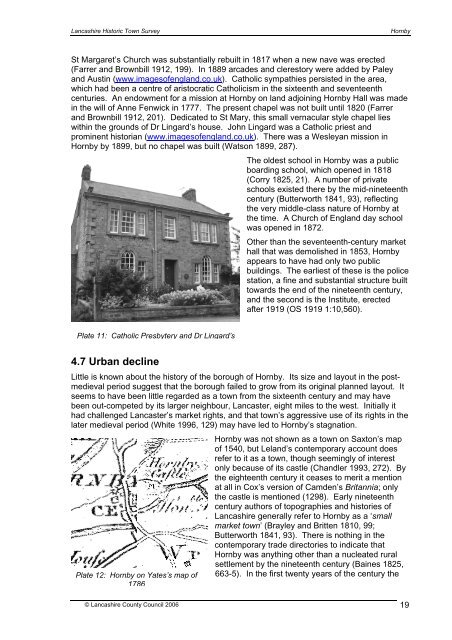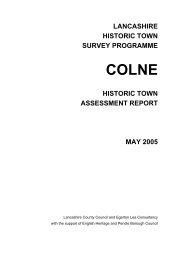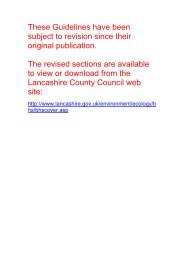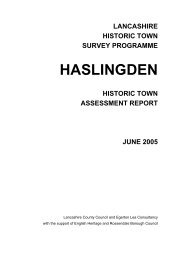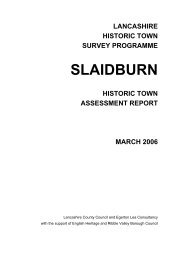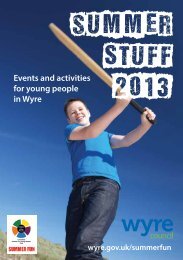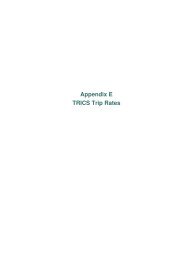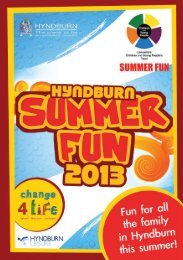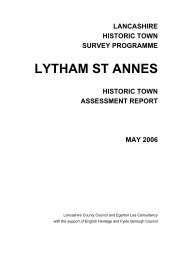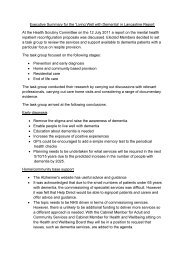HORNBY - Lancashire County Council
HORNBY - Lancashire County Council
HORNBY - Lancashire County Council
You also want an ePaper? Increase the reach of your titles
YUMPU automatically turns print PDFs into web optimized ePapers that Google loves.
<strong>Lancashire</strong> Historic Town SurveyHornbySt Margaret’s Church was substantially rebuilt in 1817 when a new nave was erected(Farrer and Brownbill 1912, 199). In 1889 arcades and clerestory were added by Paleyand Austin (www.imagesofengland.co.uk). Catholic sympathies persisted in the area,which had been a centre of aristocratic Catholicism in the sixteenth and seventeenthcenturies. An endowment for a mission at Hornby on land adjoining Hornby Hall was madein the will of Anne Fenwick in 1777. The present chapel was not built until 1820 (Farrerand Brownbill 1912, 201). Dedicated to St Mary, this small vernacular style chapel lieswithin the grounds of Dr Lingard’s house. John Lingard was a Catholic priest andprominent historian (www.imagesofengland.co.uk). There was a Wesleyan mission inHornby by 1899, but no chapel was built (Watson 1899, 287).The oldest school in Hornby was a publicboarding school, which opened in 1818(Corry 1825, 21). A number of privateschools existed there by the mid-nineteenthcentury (Butterworth 1841, 93), reflectingthe very middle-class nature of Hornby atthe time. A Church of England day schoolwas opened in 1872.Other than the seventeenth-century markethall that was demolished in 1853, Hornbyappears to have had only two publicbuildings. The earliest of these is the policestation, a fine and substantial structure builttowards the end of the nineteenth century,and the second is the Institute, erectedafter 1919 (OS 1919 1:10,560).Plate 11: Catholic Presbytery and Dr Lingard’s4.7 Urban declineLittle is known about the history of the borough of Hornby. Its size and layout in the postmedievalperiod suggest that the borough failed to grow from its original planned layout. Itseems to have been little regarded as a town from the sixteenth century and may havebeen out-competed by its larger neighbour, Lancaster, eight miles to the west. Initially ithad challenged Lancaster’s market rights, and that town’s aggressive use of its rights in thelater medieval period (White 1996, 129) may have led to Hornby’s stagnation.Plate 12: Hornby on Yates’s map of1786Hornby was not shown as a town on Saxton’s mapof 1540, but Leland’s contemporary account doesrefer to it as a town, though seemingly of interestonly because of its castle (Chandler 1993, 272). Bythe eighteenth century it ceases to merit a mentionat all in Cox’s version of Camden’s Britannia; onlythe castle is mentioned (1298). Early nineteenthcentury authors of topographies and histories of<strong>Lancashire</strong> generally refer to Hornby as a ‘smallmarket town’ (Brayley and Britten 1810, 99;Butterworth 1841, 93). There is nothing in thecontemporary trade directories to indicate thatHornby was anything other than a nucleated ruralsettlement by the nineteenth century (Baines 1825,663-5). In the first twenty years of the century the© <strong>Lancashire</strong> <strong>County</strong> <strong>Council</strong> 2006 19


